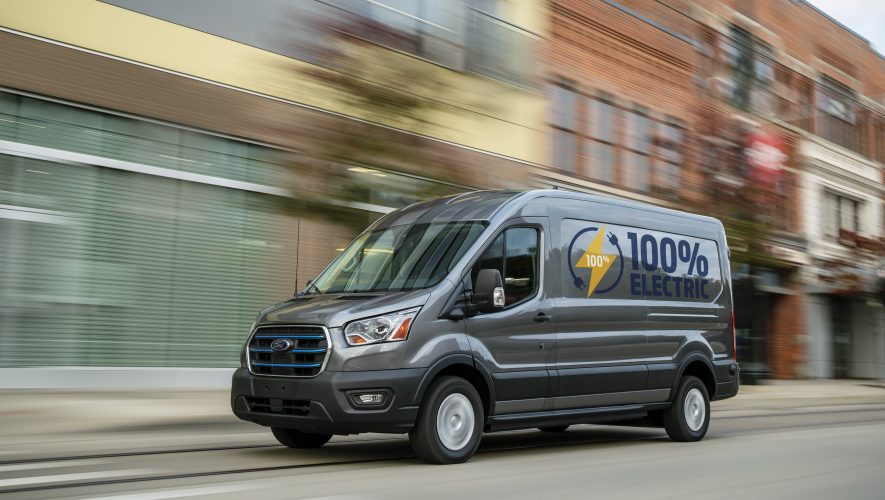Ford unveiled its new all-electric Transit van on Nov. 12, 2020.
Ford
Ford Motor expects its new all-electric Transit van to help it hold on to its lead in commercial vans as new and longtime competitors enter the emerging market.
The vehicle, which Ford unveiled Thursday morning, is designed for commercial and work buyers — a major part of its business and a key growth area under new Ford CEO Jim Farley.
“Our commercial business in general is absolutely key to the company,” Ted Cannis, Ford North America general manager of commercial business, told CNBC, adding the vehicle will be profitable. “We were targeting customers that have to do real work.”
The E-Transit is expected to arrive late-next year. It’s expected to be part of a new segment of all-electric work vans used for deliveries, maintenance and other services by Amazon, United Parcel Service and other businesses that want to switch their vehicle fleets from gasoline or diesel to electric.
The new van is part of Ford’s plan to invest $11.5 billion in electric vehicles through 2022. Ford’s North American market share of commercial vehicles in the third quarter of this year was 57%, according to the company.
New competitors
Unlike the current commercial van market, Ford is defending its market share from traditional rivals such as Mercedes-Benz and General Motors as well as newer EV companies such Workhorse and Rivian. Amazon has already pre-ordered 100,000 all-electric vans from Rivian and 1,800 from Mercedes-Benz.
Ford has a “lot of demand” for all-electric commercial vehicles, Cannis said. The automaker announced plans Tuesday to increase production of its forthcoming all-electric F-150 pickup by 50%. It declined to disclose specific production announcements.
Amazon plans to have 10,000 new electric delivery vans from Rivian on the road as early as 2022 and 100,000 of the vehicles on the road by 2030.
Amazon/Jordan Stead
Adoption is going to go very quickly,” Cannis said. Ford expects the global electric van market to grow to 1.1 million vehicles by 2030.
The E-Transit will start at under $45,000 – roughly $10,000 more than Ford’s current gasoline-powered models. It will come in eight configurations including three roof heights and three lengths as well as “chassis cab” and “cutaway” models that allow companies to more easily accessorize the vans.
The additional cost will be offset “pretty fast even with today’s low fuel prices,” Cannis said. Ford expects the payback to come from an estimated 40% reduction in maintenance costs over its current gas-powered vans as well as additional productivity from fuel fill-ups.
Cannis declined to provide a specific timeframe for the payback, citing it will vary by model, region and type of business, among other factors.
126-mile range
The E-Transit’s estimated range (the number of miles it can drive on a single charge) is 126 miles for the smallest version of the van, according to Ford. That’s far lower than current gasoline-powered models but in-line with other announced electric vans. Ford declined to release estimated ranges for larger models, which will likely be lower.
Ford balanced the van’s range with its capabilities, according to Cannis. He said Ford found many current commercial van owners only average 74 miles per day.
Interior of the Ford E-Transit all-electric commercial van.
Ford
“They’re not driving all the time. They tend to have many fixed and local routes,” he said. “They’re stopping at customers during the day.”
The van is expected to be capable of 266 horsepower and 317 pound-feet of torque. The time to charge the vehicle’s battery for additional range varies based on charging power and method – from several hours for typical residential power outlets to approximately 30 miles of range in 10 minutes for dedicated fast chargers.
Ford said the E-Transit features a range of “connected solutions” through 4G LTE for data subscriptions and connectivity to help commercial vehicle customers manage and optimize fleet efficiency. It also will offer an available onboard generator like the upcoming of the 2021 Ford F-150 pickup.
“We are doubling down on software and digital services to help our fleet customers grow and more efficiently run their businesses,” Farley said in a release.
The charging port for the Ford E-Transit van is located in the vehicle’s grille.
Ford


